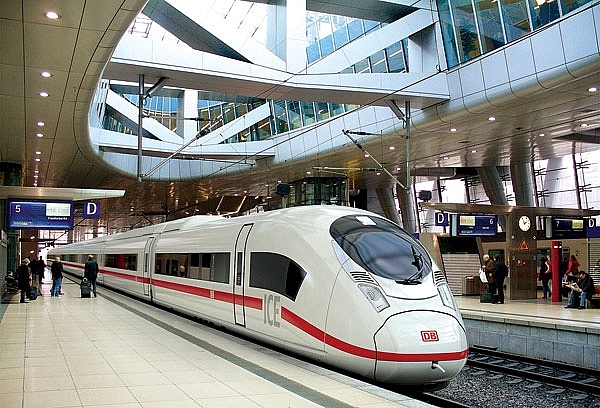MPI calculates total investment of North-South High-Speed Railway
 |
| The MPI would opt for the building of a 200kmph railroad between Hanoi and Ho Chi Minh City |
Experts from the Netherlands and Germany calculated that with the speed of 200 kilometres per hour, the transfer time between Hanoi and Ho Chi Minh City through the North-South High-Speed Railway would take 8 hours, which is appropriate for a journey of this length.
According to the MPI, the optimal option is to upgrade the old railway for goods transportation and invest in a new high-speed rail line for passenger transport.
In addition, the MPI pointed out that “the government of the Netherlands government did not upgrade the Dusseldorf-Amsterdam railway from 200 to 300kmph due to the increase of operating cost from €1.8 billion ($2 billion) to €3.4 billion ($3.81 billion) andwouldn't be able to use its maximum capacity.”
Previously, the Ministry of Transport (MoT) also proposed the PM to upgrade the current North-South Railway to facilitate passenger and goods transport.
The MPI also clarified that in case the even with the 200kmph choice, after finishing the first phase, the Hanoi-Vinh and Nha Trang-Ho Chi Minh City routes would be finished in 2023 with the capacity of 364,000 passengers per day. Meanwhile, the number of passengers on these two routes is forecast to reach 55,000-58,000 passengers per day in 2035, equivalent to 16 per cent of the expanded capacity.
Therefore, based on the assessments of experts from the Netherlands and Germany, the plan to invest in the North-South High-Speed Railway with the maximum speed of 200kmph is the most suitable and cost-effective.
Especially, the MPI proposed that to ensure technical feasibility, Vietnamese enterprises could approach the project and compete with foreign companies for high-value subcontracts of the project to avoid being dependent on foreign investors.
At the same time, the ministry also recommended that the project should a technology monopoly depending entirely on foreign partners, and should create a chance for multilateral co-operation to reduce technology costs.
What the stars mean:
★ Poor ★ ★ Promising ★★★ Good ★★★★ Very good ★★★★★ Exceptional
 Tag:
Tag:
Related Contents
Latest News
More News
- Stress laid on high-quality FDI inflows (December 15, 2025 | 11:00)
- Can Tho utilises its growth advantages (December 15, 2025 | 09:09)
- Ca Mau unlocking potential to shape a more sustainable future (December 15, 2025 | 09:02)
- Major projects to be inaugurated nationwide (December 15, 2025 | 08:00)
- MoF workshop highlights mounting concerns over ODA on-lending costs (December 12, 2025 | 16:05)
- National Assembly approves pilot mechanisms to accelerate major projects in Hanoi (December 12, 2025 | 11:29)
- Legislation gives government flexibility for loan guarantees (December 11, 2025 | 18:04)
- Vietnam eases policy approval requirements, simplifies foreign and outbound investments (December 11, 2025 | 17:53)
- Vietnam masters core technologies of automobile value chain (December 11, 2025 | 17:46)
- VAL opens second line of largest soybean crushing complex in Southeast Asia (December 11, 2025 | 12:08)




























 Mobile Version
Mobile Version